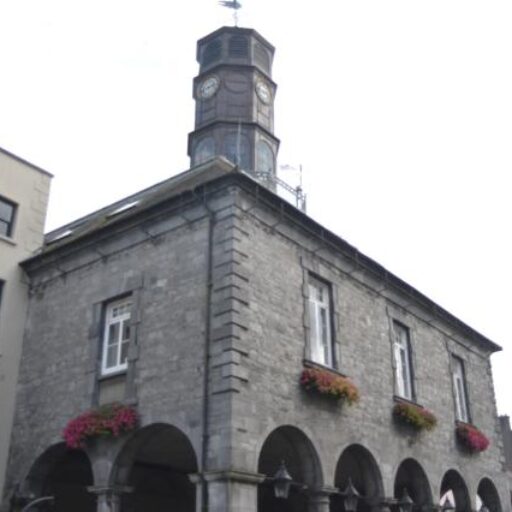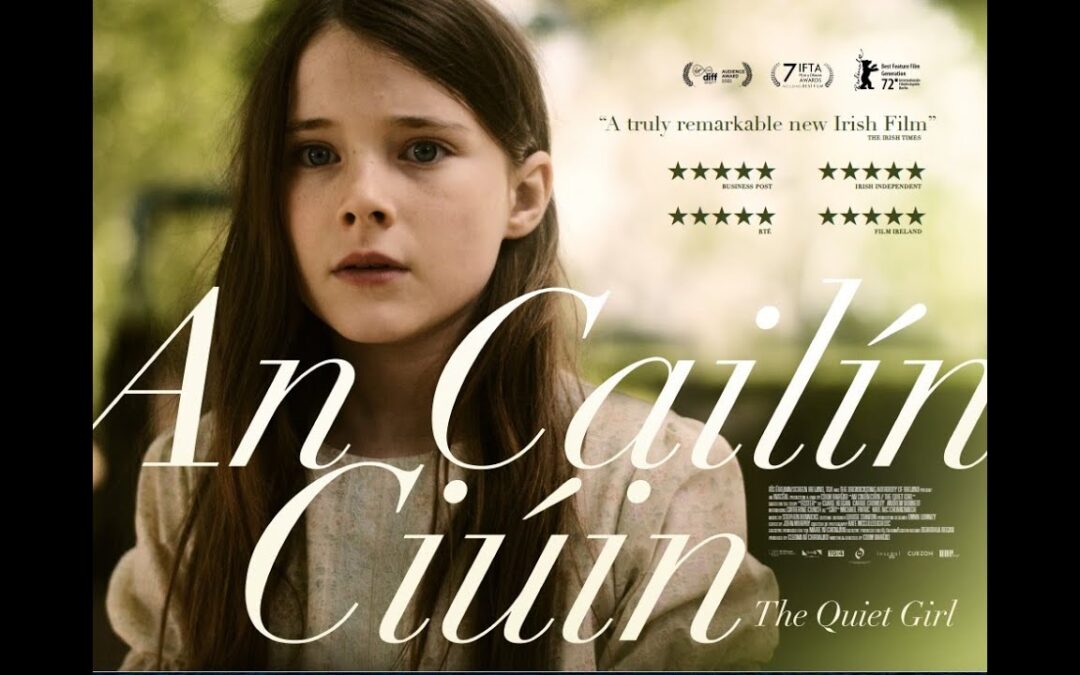Review: An Cailín Ciúin
When I was attending Coláiste na Rinne in the summer, I had the opportunity to see the Irish film ‘An Cailín Ciúin’ at the Movies@Dungarvan cinema in Dúngarbhán. It’s a great film, and it’s no wonder it’s won a lot of awards so far, with maybe a few more to come!
‘An Cailín Ciúin’ was the first Irish language film to win the Irish Academy Award (IFTA) for best film. It received a total of 7 IFTAs. It also broke box office records in Ireland and Great Britain, earning around one million Euros to date, more than four times more than any other Irish language film ever.
Colm Barrett creates a beautiful film
This film is a wonderful adaptation of the novel ‘Foster’ by Claire Keegan, and this lonely story is brought to life on the big screen in beautiful ways. Director/writer Colm and his team had to recreate rural life in Ireland in the nineteen eighties, and they did so effectively, down to the smallest detail like Bunny Carr on TV producing the show Quicksilver’ (hence the popular expression in Ireland: ‘Stop the lights!’). The use of Irish greatly adds to the atmosphere and authenticity of the film, without a doubt, and shows us that we are able to express things in Irish that cannot be done in the same way in English.
Selection of Actors
Catherine Clinch (twelve years old)’is remarkable in her first screen role as Cáit (nine years old). It’s a very difficult role, because this quiet girl doesn’t have much to say, and she has to use a wide range of facial expressions to tell the story. Despite how young Catherine is and that this is her first role, she demonstrates masterful acting.
Catherine’s family is struggling, surviving from hand to mouth. Worse than that, her father (Micheál Patric) is an alcoholic bully and her mother (Cáit Nic Cononaigh) is overwhelmed with family duties, and is now pregnant again. Cáit and Micheál do a good job as the dysfunctional parents in the film.
They put their daughter in the care of her mother’s cousin, Eibhlín (Carrie Crowley) and her husband, a quiet farmer, Seán (Andrew Bennett), in County Waterford. This is where most of the action in the film takes place, and Eibhlín and Andrew are great as foster parents, providing an exciting and nurturing environment for Cáit for the first time.
An Plota
The Quiet Girl is set in 1981 in rural Ireland. Cáit is a girl who keeps her emotions suppressed, because her parents don’t care for her or love her, because they are too busy with their own problems. They are barely able to put food on the table, and as a result, they make the decision to leave Cáit with foster parents for the summer. At first Cáit locks her feelings deeper inside, but soon she develops and blossoms with her new family.
Cáit is not the only one who needs some time to adjust to the new lifestyle. Eibhlín and Seán handle it in different ways. Ebhlín welcomes Cáit in with open arms, and she feels immense sympathy for the young girl. But Seán shows a coldness to her at first, and it takes time for him to accept her into his heart. Eibhlín and Seán also have a big secret, but I won’t reveal it here – you have to see the film!
But as a result, Cáit and her foster parents have things to learn from each other as they rediscover what love means.
Conclusion
Every frame in this truly magical film is a work of art. Kate McCullough did the cinematography for the film. She also did the cinematography on the TV series ‘Normal People’. She draws a stark contrast between Cáit’s family home (dark, gloomy) and her foster family home (bright, clean) to emphasize the plot itself. Together with a wonderful score from Stephen Rennicks, everything came together strongly so that Colm Barréad was able to overlay the story on that framework. I would give this worth-while, special film five out of five stars. If you haven’t already done so, I would recommend you go see ‘The Silent Girl”.





